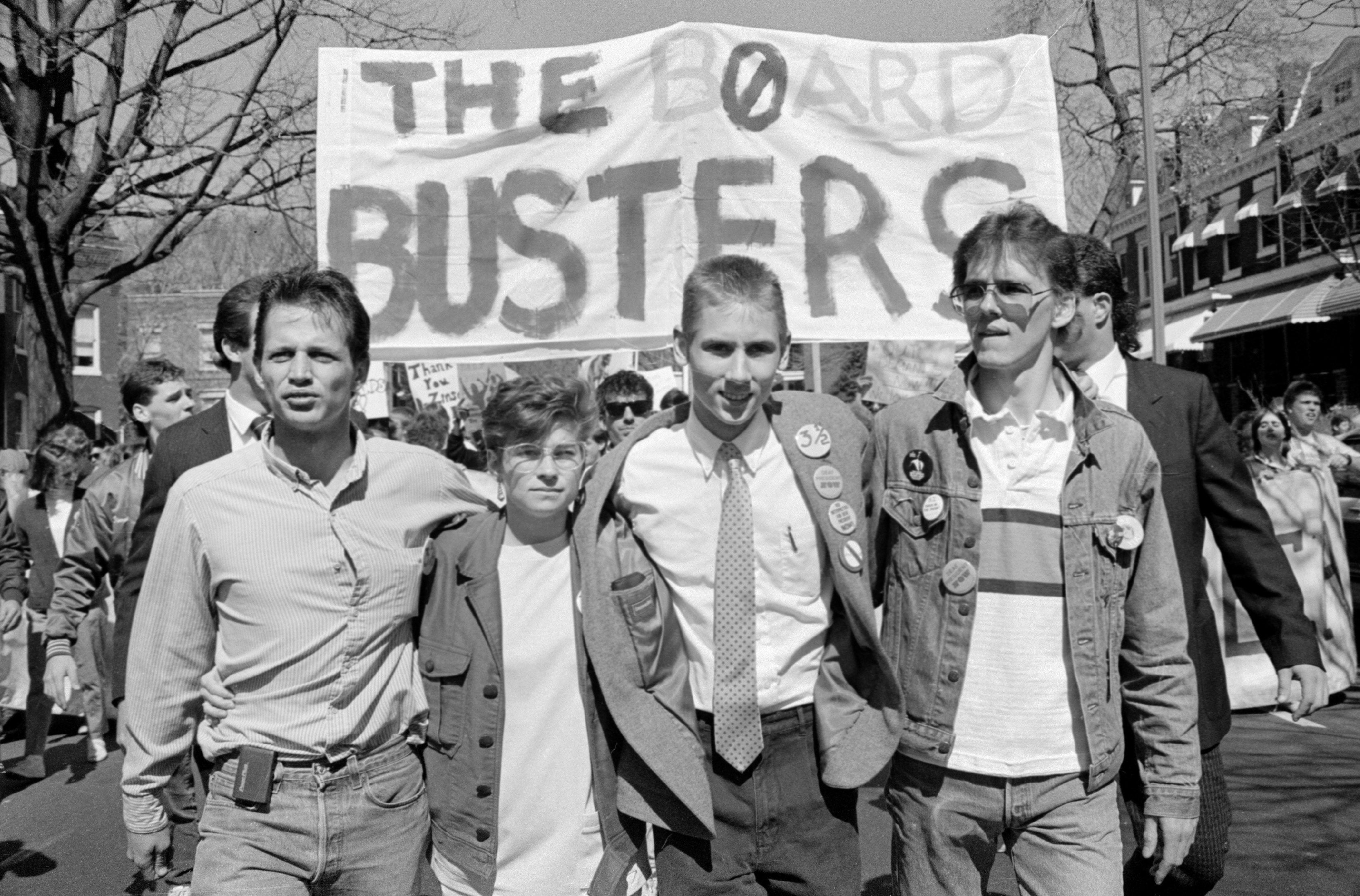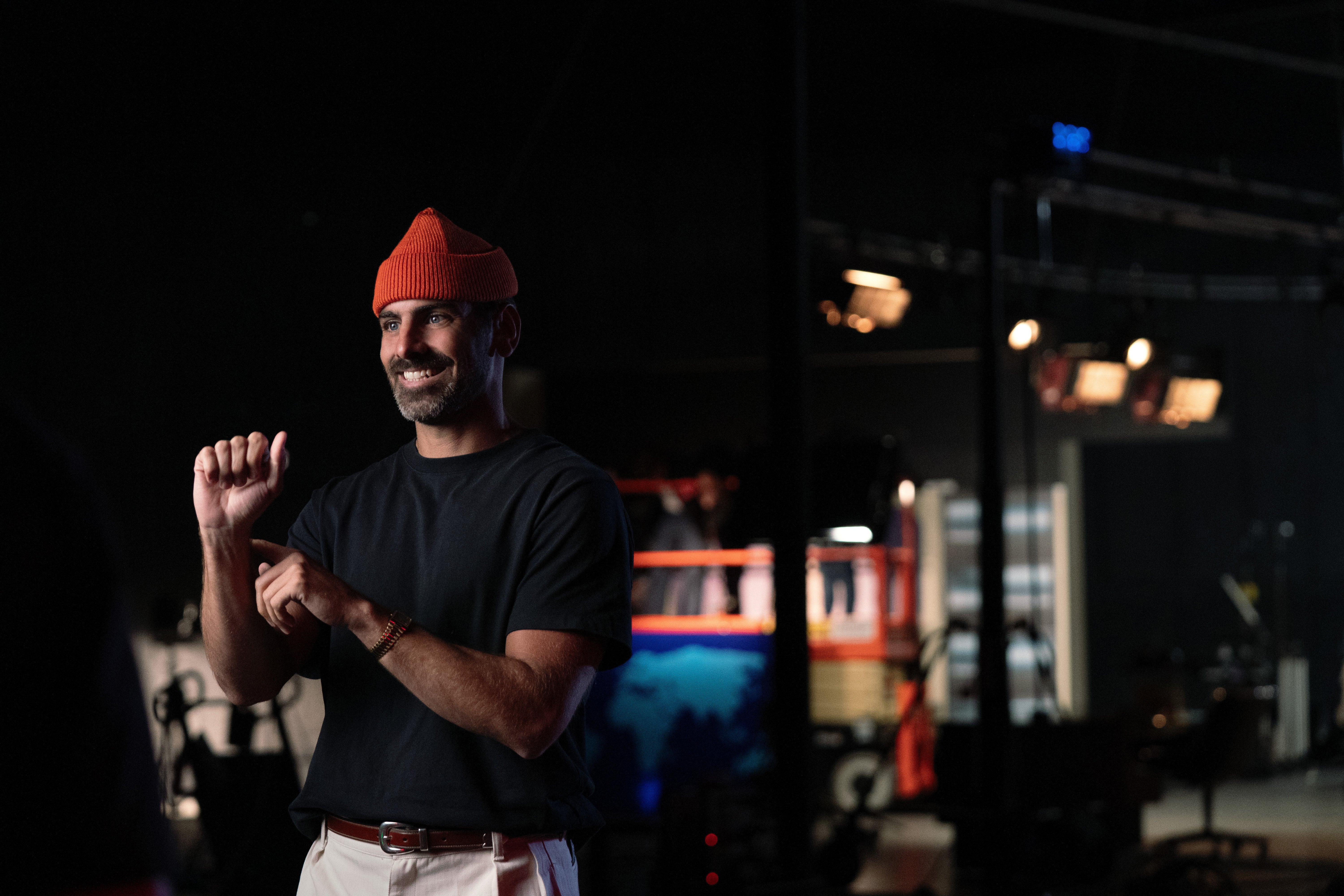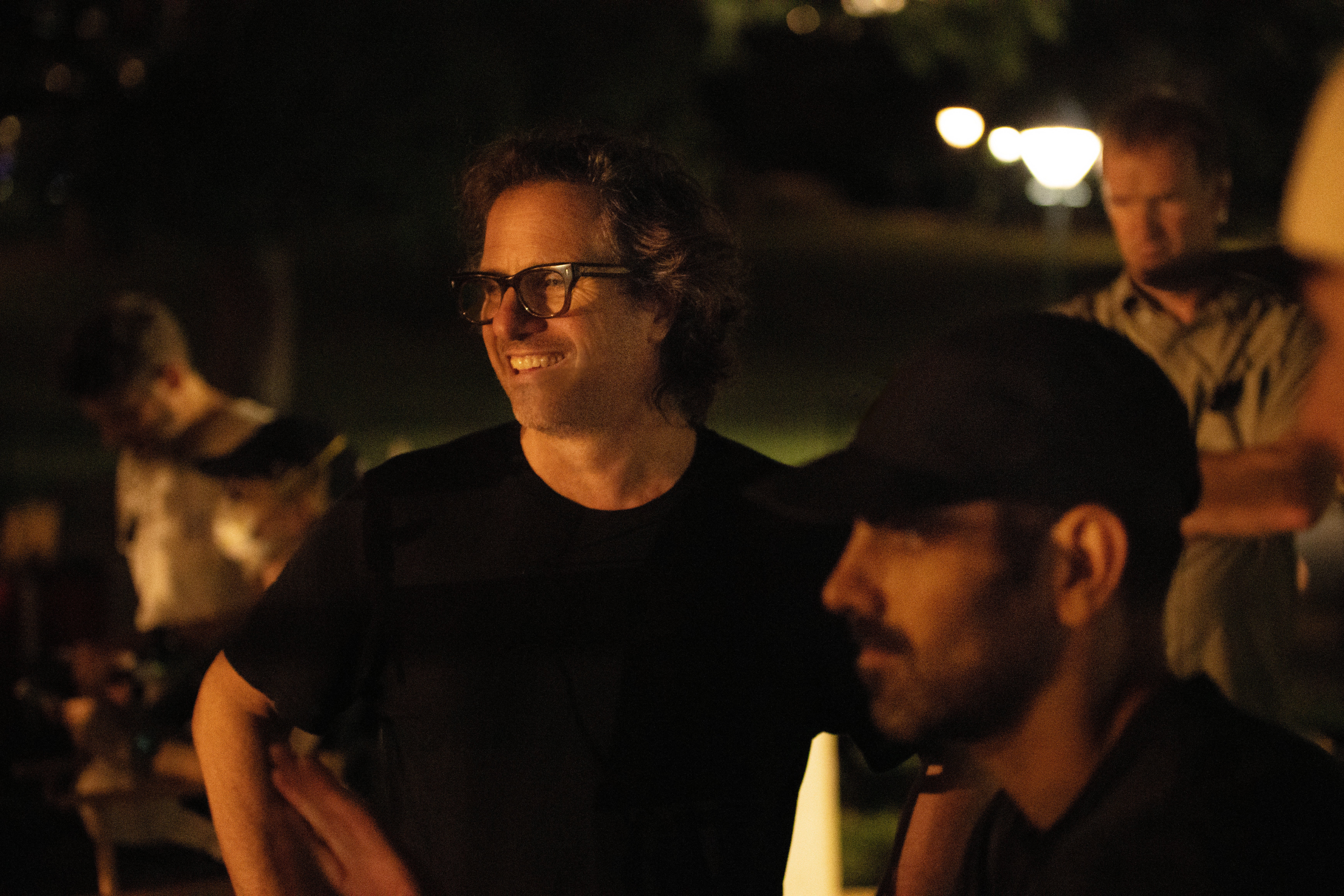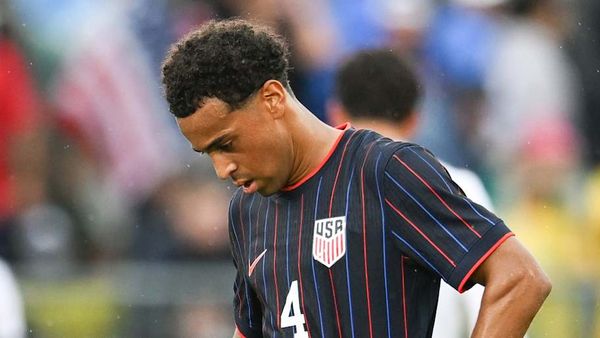Fire alarms are blaring, red lights are flashing, and students are bursting through the halls of Gallaudet, the world’s first university for deaf students. It’s a loud scene – but there is no sound.
The unlikely contrast is an intentional decision made by the creators of Deaf President Now!, an innovative and pioneering documentary about the advent of the deaf civil rights movement.
In 1988, a group of scrappy youngsters, Jerry Covell, Bridgetta Bourne-Firl, Tim Rarus and Greg Hlibok – nicknamed “the Gallaudet Four” – organised eight days of rallies, protests and boycotts against the appointment of a non-deaf president at their school, paving the way for the Americans with Disabilities Act (ADA).
They made history, generating nationwide attention – but their protests have gone unrecognised for 37 years.
“I can’t think of a civil rights moment in American history that is more inspiring than this and yet it's shocking and embarrassing that this story hasn't been more widely told,” the documentary’s co-director Davis Guggeinheim (An Inconvenient Truth) tells The Independent.
“In the Deaf community they are legends, but in the hearing world they've been forgotten.”
Deploying an experimental narrative approach called Deaf Point of View, the film uses intricate sound design and impressionistic visual photography to thrust viewers into the deaf experience. It shows how deaf students used sign language to give speeches to crowds of hundreds, and employed lights, technology and rhythm to communicate messages across campus.
“I think one of the biggest misconceptions out there is that deaf people don't have a relationship with music or sound,” adds Guggenheim’s activist co-director Nyle DiMarco, who became the first deaf winner of America’s Next Top Model in 2015.
In the film, Bridgetta, the only female member of “the Gallaudet Four” describes her experience of listening to the radio. She can be seen bopping along to the beat of the music, feeling the reverberations in her body – only to discover that the rhythm is coming from the day’s news.
These misunderstandings are what the film seeks to unpack. Dynamics that play out onscreen also played out behind-the-scenes as Guggeinheim worked alongside his deaf co-director.
“It's uncomfortable to work with people that are different from you,” Guggeinheim admits. “The film business is a club. It’s not in human nature to say, ‘I’m going to pick this group of people who are very different from me, that speak in this different way’.”

This discomfort plays out in the documentary, too. When intransigent board leader Jane Bassett Spilman insists that hearing presidential candidate Elizabeth Zinser is qualified to head the school, despite having no experience with Deaf or hard of hearing communities, the students have other ideas. They want to be led by deaf candidate Irving King Jordan – and against all odds, they win.
Guggenheim believes that protests such as these can teach people from all backgrounds about the skills necessary for effective action today. “We can learn from how these four 20-year-olds figured out how to do this in a week,” he says.
The timing of the documentary also aligns with President Donald Trump’s proposed cuts to public services, which means Gallaudet could face closure.
“Our history is gradually being erased, and this is a really fun story about the autonomy of self and empowerment,” says DiMarco. “It's more important than ever right now with the political landscape here in the US, and really on a larger scale of the world.”
In a pioneering example of inclusivity, the team recruited 40 deaf employees to enhance the film’s authenticity. One included the disillusioned Wayne Betts Jr, a producer responsible for the Deaf Point of View who previously quit the industry as “breaking in felt like an impossible task”.

Although hearing audiences may experience the film through the Deaf and heard of hearing community’s lens, the creators wanted hearing viewers to be thrust into the role of minority; into an indecipherable world they don’t understand.
Guggenheim had his own experience of this when a power cut occurred during the film’s shoot. While deaf staff communicated using flashlights and sign language in the silhouettes, the co-director found himself “completely lost”.
The film also focuses on tensions within the movement, showcasing the diversity of opinions within a community that may outwardly showcase unification.
“It's very interesting to see them now,” he says of the activists who, 37 years on, are now adults. “I think they still don't want to hurt one another and really want to protect each other as much as possible. We told them the drama and the tea is really what gives the movie that great edge.”
The result is something fresh. “It's a truism about creativity,” Guggenheim says. “When you smash different things together – different types of people, different types of ideas, different types of personalities, different languages – amazing things happen. People want to be comfortable and yet, when you resist that, when you fight against that, beautiful things happen.”

DiMarco, who won reality show America’s Next Top Model in 2015 and received an Oscar nomination for Documentary Short Audible in 2022, has often shouldered the burden between deaf and hearing staff in industry spaces. But having a deaf crew on the new documentary translated to an easier experience.
He said it created “much less of an expectation [to educate]”, adding that he “could just focus solely on the creative aspects”.
Expanding on his hopes for the film’s impact, DiMarco says: “I would hope that this story does more than just entertain. I hope that it opens the eyes of Hollywood to see that there is an audience out there that's very hungry and curious for deaf stories.”
But the heart of the film’s purpose is also commemoration and archiving of Deaf history as well as educational.
“More and more deaf kids out there are not aware of their own history and that's very dangerous because unless we remember our history, we're bound to repeat it,” he states.
“It's important for them to reflect on how far we've come and how they were able to get the rights that they are so lucky to receive today. We want to really reinvigorate those kids and show them that the fight really is never over.”
Why Trump’s tariff threat is worrying Indian film industry
Jon Stewart explains why Trump is the ‘reverse Oprah’
‘Diminished’ Biden didn’t recognize George Clooney at actor’s fundraiser
Tom Cruise receives nearly 8-minute standing ovation at Mission: Impossible premiere
Stranger Things star added to cast of new Hunger Games: Sunrise on the Reaping
Scarlett Johansson says ‘big tech guys’ have ‘muzzled’ Hollywood







